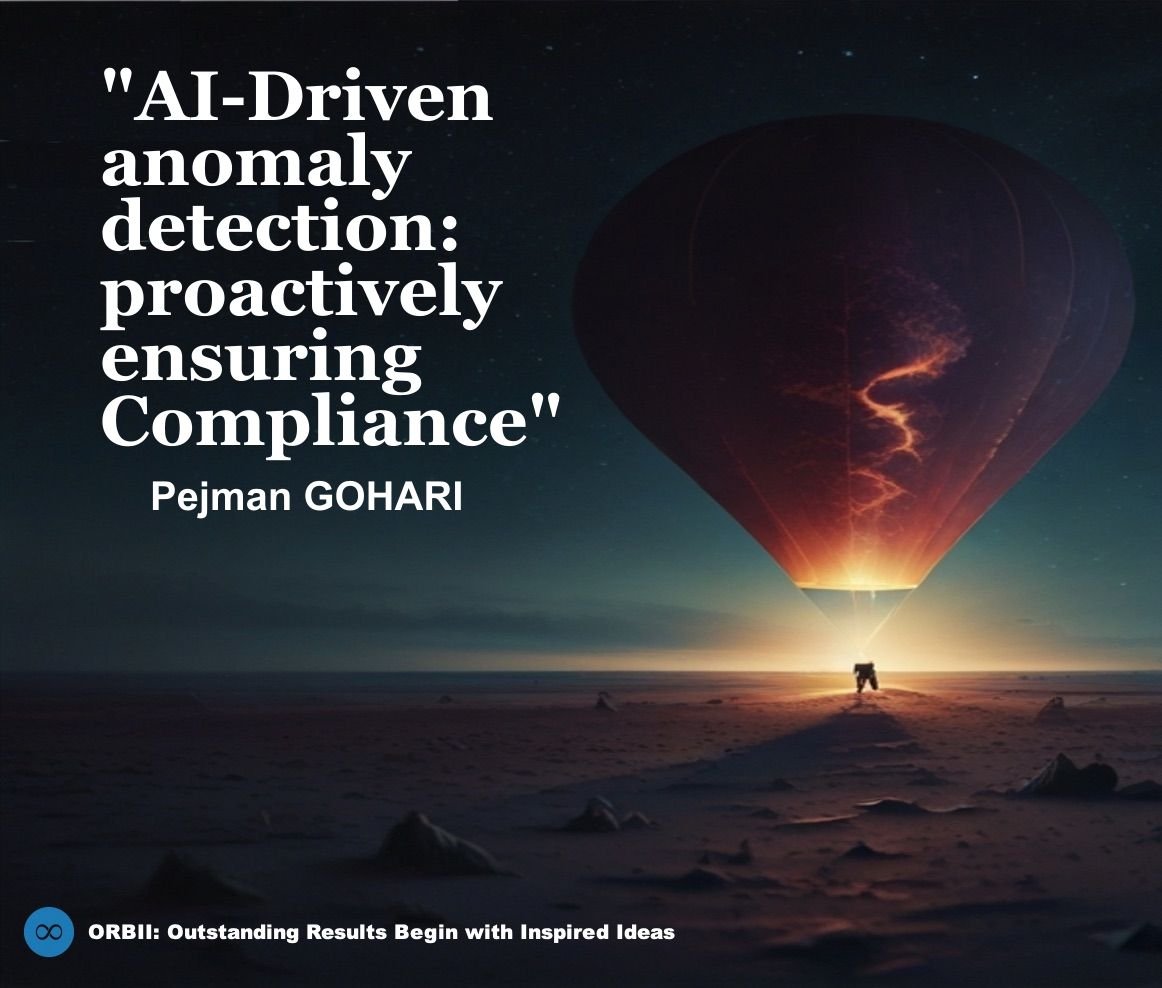AI-Driven anomaly detection: proactively ensuring Compliance
AI-Driven Anomaly Detection: Proactively Safeguarding Data and Ensuring Compliance
As organizations grow increasingly dependent on data to drive decision-making and operations, the risks associated with data breaches, fraud, and misuse have escalated significantly. In this environment, traditional methods of monitoring data access and ensuring compliance are no longer sufficient. Enter AI-driven anomaly detection, a transformative technology that allows organizations to proactively identify and mitigate risks before they escalate into costly incidents. This capability is vital for CXOs who are responsible for protecting the organization’s most valuable assets—its data—and ensuring compliance with a growing array of regulations.
The Evolution of Anomaly Detection: From Reactive to Proactive
Historically, anomaly detection has been largely reactive, relying on pre-established rules and thresholds. While this approach could flag basic irregularities, such as unauthorized access or data exfiltration, it lacked the sophistication to detect more subtle and complex threats. Moreover, traditional systems often required manual oversight, making it difficult to scale as organizations expanded their data environments.
In contrast, AI-powered anomaly detection is proactive and adaptive, using advanced machine learning algorithms to continuously monitor and analyze patterns in data usage. AI can detect deviations from normal behavior, even in real time, without requiring predefined rules. This enables organizations to identify potential risks that may have gone unnoticed with traditional methods.
How AI Detects Anomalies in Data Ecosystems
-
Pattern Recognition and Behavioral Analysis
AI leverages machine learning models to analyze historical data and establish a baseline of what constitutes "normal" behavior within an organization's data systems. This includes tracking patterns in data access, usage, movement, and interaction across different users, applications, and systems. By doing so, AI can identify any deviations from these patterns—whether they’re related to unusual access times, irregular file transfers, or abnormal user behavior.For example, if an employee who typically accesses customer records during business hours suddenly begins downloading large volumes of data in the middle of the night, the AI system will flag this as an anomaly. This early detection allows security teams to intervene before the data is compromised.
-
Adaptive Learning with Machine Learning Models
Traditional security models are often rigid, relying on a fixed set of rules to determine whether an action is suspicious. AI, on the other hand, uses adaptive learning to continuously refine its understanding of normal behavior. The more data the AI system processes, the more accurate it becomes at identifying subtle deviations from the norm. This adaptability is particularly important in dynamic environments where behaviors, workflows, and data patterns change frequently.For instance, during a corporate restructuring or merger, normal data flows may shift as new teams, departments, and systems are integrated. An AI-driven anomaly detection system can quickly adapt to these changes, ensuring that it continues to provide accurate monitoring without triggering false positives.
-
Contextual Awareness
AI-driven anomaly detection systems can incorporate contextual information—such as location, device type, user role, and access level—to improve the accuracy of anomaly detection. This context-aware approach minimizes false positives by accounting for legitimate variations in behavior.For example, if a senior executive is traveling and accesses sensitive company data from a different country, the AI system may flag this action as unusual. However, by considering contextual factors such as the executive's travel schedule, role, and the type of device used, the system can determine whether the access is legitimate or requires further investigation. This reduces unnecessary alerts while maintaining a high level of security.
Applications of AI-Driven Anomaly Detection Across Industries
-
Financial Services: Combatting Fraud
In the financial sector, anomaly detection is critical for identifying fraudulent activities such as unauthorized transactions, account takeovers, and insider trading. AI systems can analyze vast amounts of financial data in real time, identifying anomalies that suggest potential fraud. For example, if a customer's spending patterns suddenly deviate from their typical behavior, AI can flag the transaction for review, allowing the financial institution to take swift action.AI’s ability to monitor complex transactions and cross-reference multiple data points makes it highly effective in detecting fraud that would be difficult for human analysts to identify. As a result, financial institutions can reduce fraud losses and enhance customer trust by ensuring that their data and assets are protected.
-
Healthcare: Protecting Patient Data
In healthcare, protecting patient data is not only a priority but a legal requirement under regulations such as HIPAA. AI-driven anomaly detection systems can help healthcare providers safeguard electronic health records (EHRs) by identifying unusual access patterns or unauthorized data transfers. For example, if a healthcare worker accesses an unusually large number of patient records outside of normal working hours, the AI system can alert security teams to a potential breach.Additionally, AI can detect potential misuse of patient data by ensuring that only authorized personnel access sensitive information. This proactive monitoring helps healthcare organizations avoid data breaches that could result in costly penalties and reputational damage.
-
Manufacturing and Supply Chain: Securing Operational Data
In manufacturing, AI-driven anomaly detection can be used to safeguard operational technology (OT) systems and supply chain data. As industrial systems become more interconnected through IoT devices and smart sensors, the risk of cyberattacks targeting critical infrastructure has increased. AI systems can monitor the flow of data across production lines, detect any irregularities, and flag potential threats before they disrupt operations.For example, AI can detect anomalies in sensor data that indicate a malfunction or security breach, allowing manufacturers to prevent downtime and maintain operational continuity. In the supply chain, AI can monitor data exchanges between suppliers, identifying any unusual behavior that could signal a security breach or operational issue.
Enhancing Compliance with AI-Driven Anomaly Detection
In addition to improving security, AI-driven anomaly detection plays a crucial role in helping organizations meet regulatory compliance requirements. As data privacy regulations such as GDPR and CCPA become more stringent, companies are under increasing pressure to demonstrate that they are taking proactive measures to protect sensitive data.
AI can assist with compliance in several ways:
- Real-Time Monitoring and Reporting: AI systems provide continuous, real-time monitoring of data access and usage, ensuring that any unauthorized actions are detected immediately. This capability is essential for meeting compliance requirements that mandate timely reporting of data breaches.
- Automated Audit Trails: AI systems can automatically generate detailed audit trails of all data access and activity, providing organizations with the documentation they need to prove compliance during audits. These audit trails are critical for demonstrating that data governance policies are being enforced consistently across the organization.
- Mitigating Insider Threats: Insider threats—whether intentional or accidental—are a major compliance risk. AI’s ability to detect abnormal behavior by employees, contractors, or third-party partners helps prevent data leaks and ensures that only authorized individuals access sensitive information.
Implementing AI-Driven Anomaly Detection: A Strategic Approach for CXOs
For CXOs, implementing AI-driven anomaly detection is not just a technical challenge; it is a strategic initiative that requires buy-in from across the organization. To maximize the impact of AI-driven anomaly detection, CXOs should consider the following strategies:
-
Integrate AI with Existing Security Frameworks: AI-driven anomaly detection should complement existing security infrastructure, such as firewalls, intrusion detection systems (IDS), and identity access management (IAM) solutions. Integrating AI with these systems ensures a cohesive security approach that covers both perimeter defenses and internal data monitoring.
-
Educate and Empower Employees: AI-driven anomaly detection is most effective when combined with a strong data security culture. CXOs should prioritize employee training on data security best practices and ensure that staff understand the importance of protecting data. Employees should also be educated on how AI systems work to minimize any concerns about privacy or surveillance.
-
Ensure Continuous Learning and Improvement: AI models for anomaly detection should be continuously updated with new data and insights to remain effective. CXOs should work closely with data science and security teams to ensure that AI systems are regularly tuned and improved to reflect evolving data patterns and emerging threats.
A Future of Predictive Protection
AI-driven anomaly detection represents a paradigm shift in how organizations approach data security and compliance. By enabling real-time monitoring, adaptive learning, and predictive capabilities, AI helps CXOs safeguard their organization’s data assets, mitigate risks, and maintain regulatory compliance.
In the digital economy, where data is both a critical asset and a major liability, AI-driven anomaly detection will be essential for building trust, maintaining operational integrity, and driving long-term success. CXOs who embrace AI to proactively manage data risks will position their organizations to thrive in an increasingly complex and interconnected world.
Licence: This article is published under the MIT Licence.



